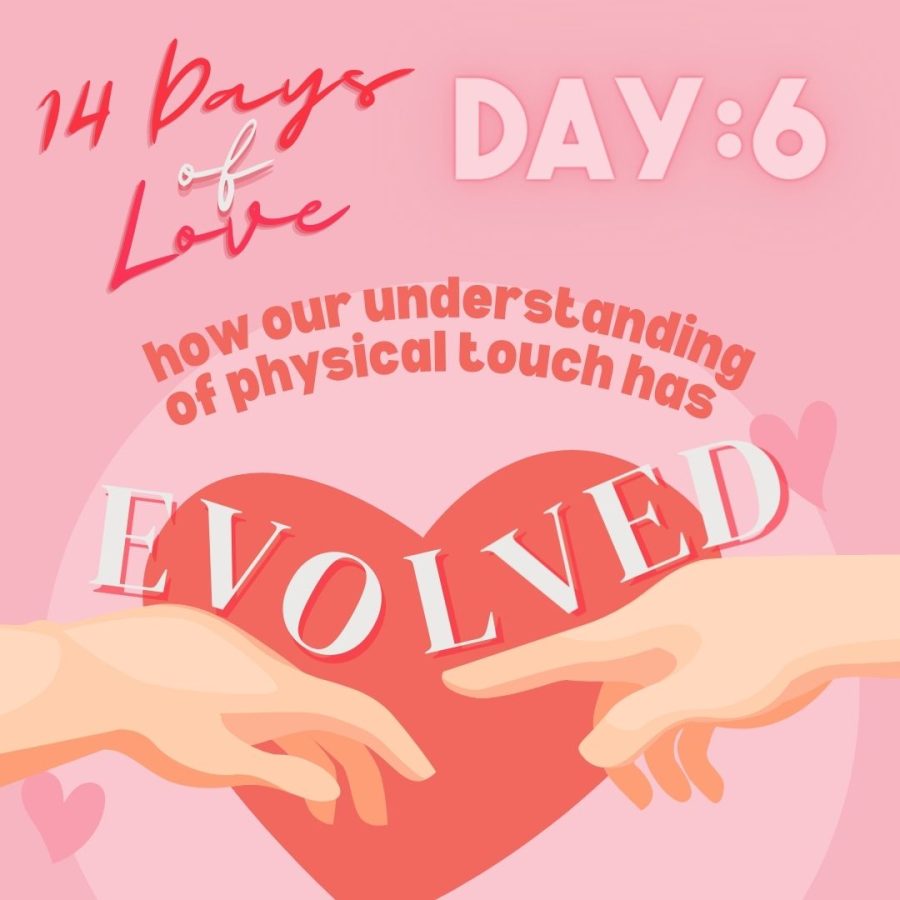14 Days of Love Day 6: Physical Touch: The Sense Essential to What It Means to be Human
February 6, 2022
Of the five senses – smell, sight, touch, taste and hearing – touch is one of the most intimate. Touching and tasting are the only senses that require direct contact; smelling, seeing and hearing can be done from a distance. As a result, touch — especially the skin-to-skin kind — is also one of the most taboo to discuss.
However, our sense of touch is not only the most primal — even single-celled organisms experience and respond to touch — it has a clear evolutionary purpose. Touch provides us with important information about our environment, allowing us to more safely navigate our surroundings. For example, the feel of a sharp or pointed object saves us from further injuring ourselves.
In scientific terms, touch is simply a biological, nerve-filled process. According to Scientific American, our skin is covered in touch sensors, which have nerve endings. These sensors correspond to nerve fibers connected to the central nervous system. Together, the sensors and fibers serve as interpreters, transforming the sensation of touch into electrical signals we can process.
Touch is one of the main ways we connect with others. According to Berkeley’s Greater Good Magazine, touch is “our primary language of compassion and a primary means for spreading compassion.” Touch is essential to development, with a mother’s touch being key to the formation of a mother-child bond. The connection helps convey emotions, including affection, encouragement and support, conform to social convention and communicate sentiments we cannot or do not want to express with words. Perhaps most surprisingly, touch has been proven to have health benefits: research found that premature newborns who received 45 minutes total of touch therapy each day for five to ten days gained 47% more weight than infants who did not.
Touch is also unusual in the sense (pun intended) that comfort levels vary between cultures and peoples, with some far more comfortable with physical contact than others. In general, Americans and British people are more touch-averse than the rest of the world. One study found that in a conversation between four pairs of friends in Britain, the U.S., France and Puerto Rico, the friends touched each other zero, two, 110 and 118 times, respectively.
This means that touch shapes customs and traditions. In Latin culture for example, it is common to greet friends and family with a kiss on the cheek. In Western European cultures, though, this is not as accepted and can potentially be viewed as an invasion of personal space.
Additionally, different types of touching have different undertones depending on the culture. In Asian cultures, hand-holding between female friends is common and regarded as platonic; even in Middle Eastern cultures, where religion sets a conservative precedent, hand-holding between male friends is accepted (however, any physical contact with the other sex whatsoever is deemed inappropriate).
With all of the benefits associated with physical touch, perhaps we as Americans should be more open to touching as a form of connecting. Above all else, though, comfort level when it comes to touch is subjective, and if you ever feel uneasy, do not hesitate to speak out.










